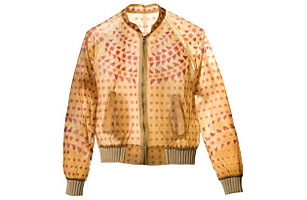
Considering the unlovely grubs that produce it, silk is a remarkably beautiful textile. Now Suzanne Lee, a researcher at London's well-regarded Central Saint Martins College of Art and Design, has developed a material made by the bacteria that are usually used to turn green tea into the fermented beverage kombucha. As they digest sugar, the bacteria produce a mat of cellulose, which Lee figured out how to harvest and dry. The resulting fabric, which has a vaguely skinlike texture, can be molded and sewn into shirts and coats. It's not perfect yet; if it gets wet, it absorbs up to 98% of its weight and "gets heavy and gooey," says Alexander Bismarck, a chemical-engineering professor at Imperial College London who is trying to devise a more water-repellent culture to grow the bacteria in. But it's a heckuva lot kinder to the planet than polyester.